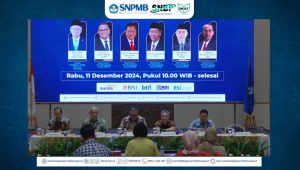Milkfish (Chanos chanos, Forsskal, 1775) commonly live in tropical offshore marine waters around islands and along continental shelves, at depths of 1 to 30 m. They also frequently enter estuaries and rivers (Froese et al., 2015). The milkfish is important seafood in Southeast Asia and some Pacific Islands (FAO, 2020). Milkfish are typically harvested at sizes of 20-40 cm (about 250-500 g), and marketed primarily fresh or chilled, whole or deboned, frozen, or processed (e.g. smoked fish deboned, and pressure cooked milkfish).
In general, all marketed milkfish are produced in farms, only a few being caught from natural waters (FAO, 2020). Milkfish is the popular seafood product of Indonesian fishing towns, such as Juwana and Semarang in Central Java and Sidoarjo and Surabaya in East Java. In Java Island, most milkfish ponds are located along the coastal area. However, coastal waters may be contaminated with heavy metals, including cadmium (Cd) and copper (Cu), because of human activities (USEPA, 2007; Asih et al., 2013; Soegianto et al., 2013; Nursanti et al., 2017). Hence, the impacts of these metals on milkfish culture should be considered.
Cu and Cd are commonly found in aquatic systems due to both natural and anthropogenic sources (USEPA, 2007). In most natural waters, Cu and Cd are usually present at low concentrations. However, in polluted waters, the concentration of Cu can reach 0.85–7.75 mg/L (Boran and Altinok, 2010; Asih et al., 2013), and as high as 200 mg/L, especially in and near mining areas (USEPA, 2007), meanwhile the concentration of Cd was up to 16.1 mg/L in polluted waters (Cao et al., 2012).
Cu is an essential element required by all living organisms because it plays prominent roles in various physiological and biochemical processes (Solomon and Lowery, 1993). Although copper is an essential element, it can be very toxic when its cellular level is elevated (Pena et al., 1999; Usman et al., 2013). Cd is a very toxic metal without apparent physiological function (White and Rainbow, 1986).
It has been known from toxicological studies that elevated metals concentrations in water can lead to increased metals levels in the gills of aquatic organisms (Grosell and Wood, 2002; Soegianto et al., 2013; Nursanti et al., 2017), and alters the function of the gills by causing severe osmotic and ion regulation, gas exchange, and excretion of metabolic waste products (Cerqueira and Fernandes, 2002; Monteiro et al., 2010; Adhim et al., 2017; Listiyani et al., 2018; Novianty et al., 2019). This study was undertaken to evaluate the toxicity of Cu and Cd on the juvenile milkfish (Chanos chanos), and their impact on osmoregulation.
The objectives of this study were to evaluate the toxicity of Cu and Cd on the juvenile milkfish (Chanos chanos), their impact to osmoregulation and histological changes of the gills. Mortality increased with increasing Cd and Cu concentration. The 96 h LC50 with 95% confidence limits were 154.27 (129.27-184.11) mg/L Cd and 20.27 (17.33-24.18) mg/L for Cu. Increasing Cd and Cu in media increased the SO of fish. The level of gill damage increased with increasing Cd and Cu concentration of media. The changes in gill morphology due to exposure to Cd and Cu in this study could be a defense response of fish to metals in the environment since all fish still alive during the experiment.
Author: Agoes Soegianto
Link:
http://www.envirobiotechjournals.com/article_abstract.php?aid=11086&iid=323&jid=4









